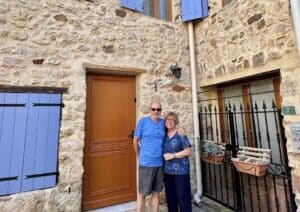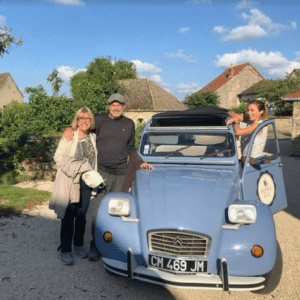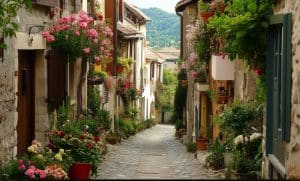Tuscany, a region in central Italy, has long been celebrated as one of the world’s most iconic destinations. Known for its breathtaking landscapes, medieval hill towns, art-filled cities, and gastronomic delights, Tuscany offers an experience that can only be described as a land of wine and wonder. This evocative phrase captures the essence of a region steeped in history, culture, and natural beauty. It highlights Tuscany’s deep connection to its famous vineyards while also celebrating the many marvels that make it an irresistible travel destination.
The Wine: A Global Legacy
Chianti and Beyond: A Tradition of Excellence
Wine is inseparable from Tuscany’s identity. Some of the most celebrated varieties are produced here, including Chianti, Brunello di Montalcino, and Vino Nobile di Montepulciano. Rooted in centuries-old traditions, these wines have placed Tuscany firmly on the global map as one of the world’s premier wine-producing regions.
The region’s ideal climate—warm days, cool nights, and varied elevations—combined with its rolling hills and fertile soil, creates perfect conditions for grape-growing, particularly Sangiovese, the dominant variety in many Tuscan red wines. This natural advantage, coupled with traditional winemaking techniques, produces wines that are known for their depth, balance, and complexity.
The Chianti Classico Region
At the heart of Tuscany’s wine heritage is the Chianti Classico region, which stretches between Florence and Siena. Known for its iconic black rooster seal, this area has been producing wine since the 13th century. The vineyards, with their meticulously cultivated rows of vines, are an invitation to explore a landscape where every bottle tells a story.
Visitors to Tuscany come not only to taste its wines but to experience the culture surrounding them. Wineries offer immersive tours where guests can walk among the vines, learn about the harvest, and savor wines paired with local delicacies. In Tuscany, wine is not just a beverage—it’s an integral part of the region’s history, culture, and daily life.
The Wonder: Landscapes, Art, and Architecture
Rolling Hills and Cypress-Lined Roads
Tuscany’s landscapes are nothing short of magical. The region’s rolling hills, dotted with vineyards, olive groves, and sunflowers, are famously lined with tall cypress trees, creating postcard-perfect vistas at every turn. These views have been immortalized in Renaissance paintings and continue to captivate travelers and artists today.
The diversity of Tuscany’s terrain—from the wild stretches of the Maremma coast to the lush valleys of Val d’Orcia and the rugged Apennine Mountains—invites exploration. Whether walking, cycling, or driving, each journey through Tuscany’s landscape reveals its layers of beauty and history.
The Cities of Art: Florence, Siena, and Pisa
Tuscany’s wonder extends to its cities, many of which were the birthplace of the Italian Renaissance. Florence, the regional capital, is known as one of the world’s greatest art cities, home to Michelangelo’s David, Brunelleschi’s Dome, and countless masterpieces. Florence’s streets are a living museum where Renaissance architecture and art are woven into the fabric of everyday life.
Siena, with its medieval charm, offers a different glimpse into Tuscany’s artistic and historical richness. The city’s Gothic architecture, particularly in its magnificent Piazza del Campo, provides a window into a past marked by tradition and community spirit.
Then there’s Pisa, known worldwide for its Leaning Tower. The tower, alongside the stunning Piazza dei Miracoli, serves as a testament to Tuscany’s architectural legacy and one of Italy’s most iconic landmarks.
Hilltop Towns and Medieval Castles
Scattered throughout Tuscany are numerous hilltop towns and medieval castles that transport visitors back in time. San Gimignano, often referred to as the “Medieval Manhattan” because of its skyline of stone towers, and Montepulciano, famed for its wine and panoramic views, are just two examples of towns that offer both historical intrigue and natural beauty.
Many of these towns were once fortified, and today, their ancient walls and castles stand as reminders of Tuscany’s turbulent past. Visiting these towns and exploring their winding streets and historic structures is like stepping into a living history book.
Food and Culinary Traditions
Farm-to-Table Cuisine
Tuscany’s culinary reputation is as esteemed as its wines. The region’s dedication to local, seasonal ingredients is the foundation of its traditional cuisine. Tuscan food is simple, rustic, and incredibly flavorful, rooted in the fresh produce and meats grown in the region’s fertile land.
Whether it’s wild boar from the forests, truffles from the San Miniato hills, or freshly made pecorino cheese, every dish in Tuscany reflects the deep connection between the land and the kitchen. Meals are often enjoyed with a glass of the region’s wine, enhancing the flavor and making for a truly Tuscan dining experience.
Olive Oil: Liquid Gold
Tuscany is also known for its exceptional olive oil, sometimes referred to as “liquid gold.” The region’s olive groves, many of which have been producing olives for centuries, yield some of the finest olive oils in the world. Tasting fresh, peppery olive oil at a family-owned frantoio (olive mill) is a quintessential part of the Tuscan experience and a reminder of the region’s deep agricultural roots.
4. The History and Culture of Wonder
Etruscans: The Foundations of Tuscany
Tuscany’s history stretches back thousands of years to the time of the Etruscans, an ancient civilization that left a lasting legacy on the region. Visitors can explore Etruscan ruins in places like Volterra and Cortona, discovering the origins of many Tuscan towns and the foundations of its rich cultural heritage.
The Renaissance: Birthplace of the Modern World
Tuscany played a central role in the Renaissance, a period that transformed art, science, and philosophy. The region gave birth to some of history’s greatest minds, including Leonardo da Vinci, Michelangelo, and Dante Alighieri. Their work, much of which can still be seen in Tuscany’s museums and churches, shaped the course of Western civilization and continues to inspire the world.
5. Festivals and Traditions: Celebrating Life
Tuscany is a region that celebrates life in every form. Throughout the year, towns across the region host festivals that celebrate everything from the grape harvest to medieval traditions. One of the most famous events is the Palio di Siena, a thrilling horse race that takes place in Siena’s Piazza del Campo. This historic event, rooted in local pride, has been drawing spectators for centuries.
Other festivals, like the Luminara di San Ranieri in Pisa and the Festa dell’Uva in Impruneta, showcase the region’s ability to blend its history, culture, and community spirit in a way that feels both timeless and alive.
The magic of Tuscany
Tuscany’s magic lies in its ability to blend simple pleasures with profound cultural and historical depth. While phrases like “the land of wine and wonder” may serve as creative ways to capture its essence, they remind us that this region is more than just a beautiful landscape. Tuscany is a place where wine is a way of life, art and history come alive, and the land itself invites you to pause and take in its wonders.
From savoring a glass of Chianti in a sun-soaked vineyard to standing in awe before Michelangelo’s David, every moment in Tuscany feels like a celebration of life’s extraordinary beauty.







